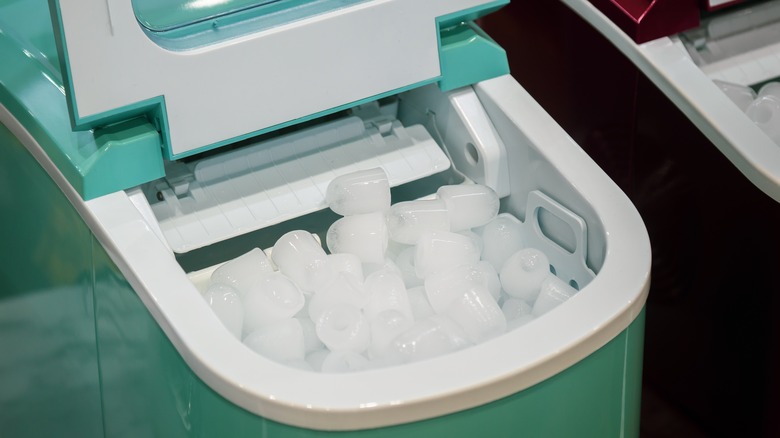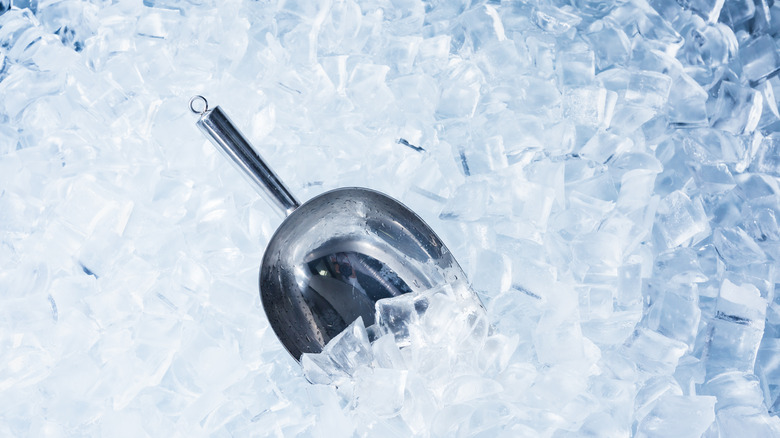The Simple Way To Keep Your Portable Ice Maker Clean
It's no secret that Americans love ice. The United States pioneered the ice industry, and demand only continues to rise. A 2020 study by home appliance brand Bosch found that 53% of Americans "realized the need for better ice production during the COVID-19 pandemic," a shift reflected in ice-centric Tiktok trends and specialized catering companies that charge over $14 a cube.
As the demand for ice continues to grow, portable ice makers, which turn out large quantities of high-quality ice at a remarkable speed, are becoming a household item. A compact version of the ice makers found in restaurants and bars, these portable versions are perfect for those who own food trucks, frequently entertain, or simply love gnawing on that extra-crunchy restaurant ice.
Portable ice makers have their downsides, though, and not just because they take up valuable kitchen counter real estate. Like commercial ice makers, portable ice makers should be cleaned regularly to prevent buildup. If you use your portable ice maker frequently, you should clean it once a month, more if you start to notice that your ice has a strange taste or smell. A simple cleaning involves wiping the interior down with dish soap; you can also run a cycle using water diluted with vinegar. If things get nasty, bust out a scrub brush to get into the nooks and crannies — but you can avoid deep cleans with preventative measures. The simplest way? Never leave water standing in the machine.
Proper storage makes cleaning a breeze
Sure, you might empty your portable ice maker before storing it away or going on vacation, but you should really be draining the water out every time you use it. It's also a good idea to wipe down any damp components and keep the environment surrounding the machine as clean as possible. That's because leaving standing water in the dark, dank inside is the perfect environment for mold. Mold doesn't just make your ice taste nasty; it's downright dangerous. According to the Centers for Disease Control, mold can cause severe respiratory symptoms, especially in people with allergies or asthma.
Nobody's perfect, though, so if you leave water standing in your ice maker for a week or two and notice mold, it's time to do an immediate deep clean. While dish soap and vinegar might do the trick for maintenance cleaning, a moldy machine calls for something stronger. Thoroughly clean the machine according to the manufacturer's instructions, letting moldy components soak in commercial ice maker sanitizing solution or diluted bleach. Make sure to rinse with clean water and make sure the mold is totally gone before using the machine again.

